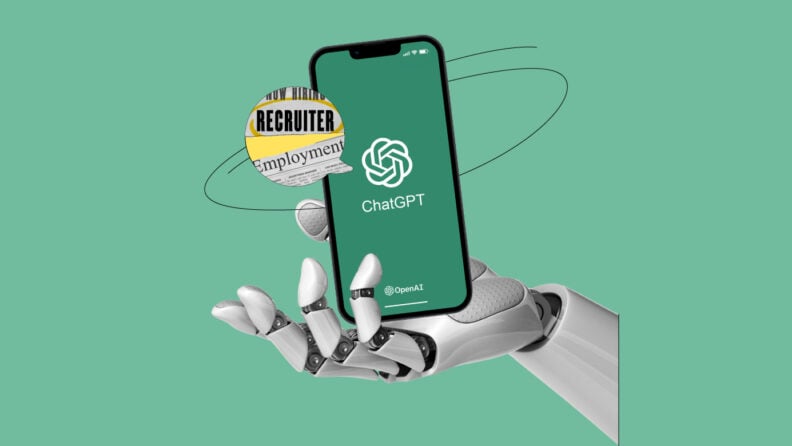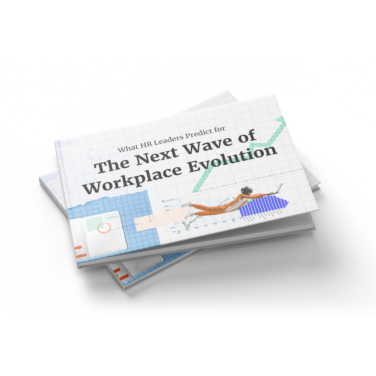In my previous article on ChatGPT prompts for HR, we explored how to use AI to draft job descriptions, build onboarding plans, and rework internal comms.
For many HR pros, that’s where the journey begins—using AI to help with day-to-day tasks that take too much time or mental energy.
But once you’re comfortable prompting, you can unlock far more value.
This is where AI becomes more than a writing assistant. It becomes a thinking partner. A pattern-spotter. A strategy shaper. A silent collaborator who works fast, asks for nothing, and helps you show up sharper, more prepared, and more even human.
And no—you don’t need to be “techy” to use these capabilities. You just need to know what outcome you’re working toward.
In this guide, we’ll walk through five powerful outcomes you can achieve using AI tools—each with practical example prompts and tips to help you go deeper.
Caution: Always double-check AI-generated content, especially when it involves sensitive topics, compliance, or employee data. These tools are a co-pilot, not a final approver.
1. Turn Data Into Insights
Outcome: Spot patterns faster and translate data into decisions.
HR teams are swimming in data: exit interviews, pulse surveys, turnover reports and more.
What I’ve seen time and time again is that while we love collecting data, we often struggle to find time to make sense of it all.
AI can help you extract meaning, surface themes, and prep what matters for leadership or action planning.
What It Helps With:
- Theming exit interviews or pulse survey comments
- Summarizing long spreadsheets for leadership
- Turning raw metrics into messaging for different audiences
- Finding patterns in existing data or organizing data to be more digestible
- Excel files. You can either use the built-in Microsoft Copilot AI tools or paste data directly into another AI (or upload it, depending on your platform) and ask the AI for summaries, comparisons, or visual suggestions. While this is a HUGE help for Excel users, it won’t replace your understanding of pivot tables (very important skill!), but it can be a help in quickly spotting patterns, writing formulas and creating quick insights to share. Remember, be sure to double-check the source data to ensure the AI isn’t hallucinating!
Why It Matters: You move from “We have data” to “We know what to do about it.,” faster and potentially with fewer steps or without the need for excel wizards or specialized data analysts.
Try These Prompts:
- “Here are 100 open-text comments from our engagement survey. Summarize the key themes in plain language and identify anything that appears more than three times.”
- “Review this turnover report by department and identify the top 3 areas with the biggest change since last quarter. Summarize it for our senior leadership team.”
- “Take this exit interview transcript and write a 3-bullet executive summary. Focus on what we can learn and what we should watch out for.”
Add-On Tip: After getting a summary, ask: “Now write 3 possible next steps HR could take to address this trend.” You’re not just analyzing—you’re moving toward action.
2. Structure Templates And Tailor Content To Different Groups
Outcome: Build reliable, repeatable spreadsheets, workbooks or other templates without starting from scratch.
Throughout my experience in HR, I’ve found that a surprising amount of time is spent redoing similar work for different people or groups.
So often I have built the same trackers, written the same comms, or formatted the same type of reports across the company.
With AI, you can turn those routines into repeatable templates and make smarter use of your data.
What It Helps With:
- Creating reusable templates for employee censuses, performance reviews, headcount reports, payroll—you name it
- Pulling summaries, comparisons, or action items from spreadsheets
- Structuring data into clear visuals or talking points for presentations
Why It Matters:
You spend less time formatting or tailoring and more time focusing on insights, decisions, and strategy (your uniquely human superpowers).
Try These Prompts:
- “Create a customizable template for a quarterly headcount and attrition report, with space for summary insights and department-level metrics.”
- “I have a CSV file with employee satisfaction scores by team. Summarize the highest- and lowest-scoring areas, and recommend 2 actions for each.”
- “Build a performance review template for people managers, including rating scales, space for feedback, and a summary section for promotion readiness.”
Add-On Tip: Once you get something to a point you like in AI, ask to expand or adapt that item. Try “Now turn this into a reusable checklist or form that can be used by other managers or HR team members.” Run this a few different ways and see how one piece of content or information can be turned into multiple things that are fit for their unique purpose and audience.
3. Save Time On Repetitive Planning
Outcome: Build faster without sacrificing quality.
If you’ve ever rebuilt an onboarding plan, a training outline, or a calendar from scratch, you know how much time those “standard” docs actually take. AI can help you skip the starting line and get to refinement faster.
What It Helps With:
- Drafting onboarding timelines
- Creating leadership development outlines
- Building DEI program content blocks
Why It Matters:
You get 70% of the way there in minutes—and can focus your energy on tailoring and executing.
Try These Prompts:
- “Build a 30-60-90 day onboarding plan for a remote senior engineer, including onboarding partners, tech setup, and first project milestones.”
- “Outline a 12-month leadership development journey for new people managers in a hybrid workplace. Include at least one experiential activity per quarter.”
- “Create a template for a quarterly HR town hall agenda. Include time blocks, suggested content, and reminders for supporting materials.”
Add-On Tip: Once you get a plan you like, follow up with: “Now turn this into a slide deck outline” or “Write a communication email to go with this plan.” You’ll build multi-format materials in one sitting.
4. Make Strategy Easier To Communicate
Outcome: Tell clearer, more compelling stories—especially with data.
HR leaders have never had more access to insights—or more pressure to make those insights meaningful to others. Whether it’s a change in people strategy, a DEI update, or a talent risk dashboard, AI can help you tell the story behind the numbers.
What It Helps With:
- Turning people metrics into leadership talking points
- Drafting slides or one-pagers for cross-functional teams
- Communicating vision, tradeoffs, or change impacts
Why It Matters:
You influence more effectively—and show up with clarity and confidence.
Try These Prompts:
- “Take this HR strategy doc and rewrite it for a general employee audience. Make it conversational, values-aligned, and under 400 words.”
- “Summarize our people analytics report into 5 bullet points a CFO would care about. Focus on cost, retention risk, and productivity.”
- “Create a one-slide narrative that explains the shift in our talent strategy, with one headline and 3 key messages underneath.”
Add-On Tip: Once your message is clear, ask: “Now write a version of this for people managers to share in team meetings.” This helps reinforce alignment across levels of the organization.
5. Model Scenarios And “What Ifs”
Outcome: Think through risks and options before decisions are made.
You don’t need a crystal ball to see around corners—you just need to pressure-test ideas before they launch. You can use AI to think through potential reactions, risks, and solutions for upcoming decisions or policies.
What It Helps With:
- Evaluating tradeoffs in policy or change design
- Stress-testing messaging or rollout plans
- Preparing leaders for likely questions or resistance
Why It Matters: You show up as a strategic thinker, not just a policy executor.
Try These Prompts:
- “If we reduce our remote work policy from 3 days to 1, what employee reactions should we prepare for? What communication and support might reduce friction?”
- “Compare three approaches to rolling out a new internal mobility framework. Highlight pros and cons, likely employee reactions, and implementation complexity.”
- “Imagine we remove our end-of-year bonuses and replace them with quarterly spot awards. What could go wrong? What might improve?”
Add-On Tip: After mapping scenarios, ask: “Now draft a leadership Q&A to help managers navigate the top 5 concerns employees may raise.” You’ll be ahead of the curve with messaging ready to go.
6. Scale Your Support Without Burning Out
Outcome: Help more people—faster—without lowering your standards.
HR’s job is to support people—and the volume of requests, conversations, and repeat questions is never-ending. AI can help you scale by turning your knowledge into self-service tools, templates, and one-click resources.
What It Helps With:
- Creating toolkits, checklists, or conversation guides
- Drafting FAQs or how-to docs for new systems
- Building repeatable, self-service resources
Why It Matters:
You make yourself more available for strategic work by making your expertise more accessible.
Try These Prompts:
- “Write a one-pager for new managers on how to give feedback. Include 3 do’s, 3 don’ts, and a sample script for constructive feedback.”
- “Create a how-to guide for employees on updating their benefits during open enrollment. Use plain language and structure it with FAQs.”
- “Draft a set of talking points for HRBPs to use in skip-level conversations, with a focus on uncovering engagement drivers and burnout risk.”
Add-On Tip: Ask AI to create both a “full version” and a “TL;DR version” for each resource, or a version formatted for Slack/Teams. The more accessible your content, the more useful it becomes.
Troubleshooting Common Issues
As you get into using AI tools, it is possible you will experience many of the all-too-common pitfalls of AI such as hallucination, getting not exactly what you asked for and my absolute least favorite, intense repetition.
These are the most common issues with AI prompting and what you can do about them.
1. Output is too generic or vague
What’s Going Wrong: The prompt didn’t include enough context, audience detail, or intent.
What To Do: Be specific in your prompt. Tell the AI who the content is for, why it matters, and where it will be used.
Prompt Fix Example:
- Instead of: “Write a training summary”
- Try: “Summarize this 60-minute virtual training session for mid-level managers who couldn’t attend. Include 3 main takeaways and 2 action items. Tone: concise and practical.
2. Writing sounds too much like AI
What’s Going Wrong: ChatGPT tends to default to overly polished, formal, or buzzword-heavy language.
What To Do: Give clear tone instructions in your prompt. Ask for a human, practical voice. Tell AI to write less like AI (more on that to come).
3. Too much repetition or stating the obvious
What’s Going Wrong: AI often tries to sound complete instead of concise. Points are not awarded for fancy words, they are awarded for usefulness and clarity (remember this, always!)
What To Do: Focus the prompt. Ask for only essential or new information and add a word limit.
Prompt Fix Example: “Write this in 150 words or fewer. Only include what’s new or important for this audience.”
4. Overconfidence or inaccurate information
What’s Going Wrong: ChatGPT is trained to sound knowledgeable and fluent, even when it’s making assumptions (hallucinating).
What To Do: Ask for sources, fact-check anything that sounds too confident, and avoid using AI to write legal or compliance content without human review (this is super super important and has many impacts, especially in HR).
Prompt Fix Example: “What are your sources for this data? Link to primary references if possible.”
5. Doesn’t match style or formatting preferences
What’s Going Wrong: AI defaults to common styles unless specifically told what to do. It thinks it knows what to do to be helpful, but often that isn’t what you truly want.
What To Do: Be clear about formatting early. Reinforce what matters to you in terms of format, tone and structure during editing–be specific!
Prompt Fix Example: “Write in bullet points, limit each point to 2 lines, use title case in headings, and avoid em-dashes or exaggerated language.”
An Attempt at Fixing AI Writing Pitfalls
Throughout this article I’ve highlighted the importance of being specific about what you want from your AI tool!
That extends to how you tell these tools to write for you. At the beginning of a chat (or better yet, in the settings), tell your AI tools how you want them to write.
Here’s an example: “Write in a professional but natural tone. Avoid filler language, jargon, and overused phrases. Do not use em-dashes or exclamation points. Avoid words like ‘transformative,’ ‘game-changer,’ or any sales-y metaphors. Keep it clear, useful, and something I’d actually say out loud.”
You can go farther here and provide your own writing samples to help the AI understand your uniquely human tone and cadence to your writing.
If that doesn’t do it, you can also reinforce your preferences with follow-up prompts like:
- “Make this sound more human.”
- “Rewrite this for clarity and remove all buzzwords.”
- “Tighten this up and make it sound like internal corporate communication.”
My best advice about this one is to be clear and consistent with how you want AI to write for you.
It will take some time to fine-tune what the AI thinks you want, but if you can get it all dialed in, it can be exceptionally helpful for shining up communications for various stakeholders.
Your Turn!
You don’t need to be an expert in AI to use it like one. You just need a clear outcome and a few good prompts.
So where do you start?
- Pick one of the outcomes above.
- Try one of the prompts.
- See how it helps.
You might save 30 minutes. You might get clarity you’ve been missing. Or you might just feel that small jolt of momentum that reminds you that you’ve got this!
Found this helpful? Bookmark it, share it with a teammate, or try one of the prompts in your next 1:1 (show your boss your new skills!). The more you experiment, the more value you’ll get.
A Quick Note On Platforms
ChatGPT is one of several tools that work similarly. Claude, Gemini, Microsoft Copilot—they all use large language models to generate and shape content based on your input.
The choice often comes down to what integrates best with your systems and where your data needs to live. The mechanics are comparable; how you prompt and edit will matter more than which one you use.
Privacy Note
AI is incredibly helpful, but it’s still a third-party system. Even if it feels like you’re just chatting with a document, anything you enter could be stored or processed outside your organization’s control, especially in free versions of AI tools.
If you wouldn’t put it in an external email or on a shared Slack channel, don’t put it in free AI tools.
This means not including real names, employee ID numbers, specific vendor details, confidential information or unreleased financials or strategy documents in your conversations with free or unpaid AI tools.
The best way to address the privacy and security challenges AI presents is to talk with your company’s IT team about the proper use of AI at work and see if they have any preferred tools or private tools that you can freely use company information in.
If not, be sure you are clear to use AI tools and then consider a paid account and opt out of allowing the AI tool to train their AI models on your data.




